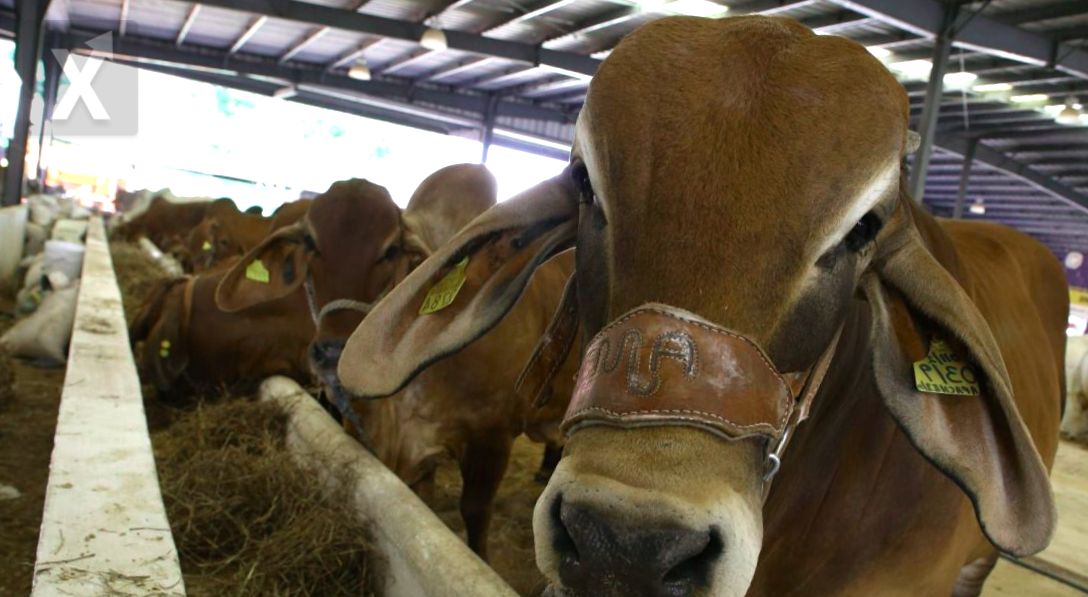Tabasco and Campeche: More Than Oil, Betting on the Agro-Industry

The main oil-producing regions of Mexico are charting new economic paths. President Claudia Sheinbaum has included Tabasco and Campeche in a "special plan" aimed at promoting the production of meat, milk, and rice. Experts and business leaders believe that this initiative could be key to diversifying the economy of these oil-rich states and strengthening the agri-food sector, although they will face several challenges to implement it.
The ratio between the income generated from oil extraction and the agri-food sector is notably different. According to data from Inegi, the oil mining sector contributes 72.4% to Campeche's GDP and 43.5% to Tabasco's, while the agri-food sector only accounts for 1.2% of GDP in Campeche and 1.7% in Tabasco. This suggests a possible shift in direction for these entities, where the oil industry has not had a significant impact on the local economy. Additionally, this administration has proposed to limit crude oil production to 1.8 million barrels per day and boost renewable energy. Víctor Ayala, director of data analytics at the Mexican Institute for Competitiveness (IMCO), points out that while oil activity is counted as part of the economy in Tabasco and Campeche, its added value is not distributed within these states. "Most of the benefits derived from oil sales go directly to the federal government for federal expenditures, which means that other sectors are the ones that truly drive the internal market in these regions," he explains. For Ayala, promoting activities related to the local market, such as producing milk, meat, and rice, seems to be an interesting strategy. "If the supply chains are well-structured and the sales strategy is clearly defined, the internal market can be activated without major issues," Ayala comments.
Do Tabasco and Campeche have the viability for meat production? According to data from the Mexican Meat Council (Comecarne), the possibility of increasing meat production in these regions depends on one key factor: the availability of feed grains (sorghum, wheat, corn, barley). Although their agriculture is more focused on agro-industrial crops like sugar cane, African palm, and fruit trees, in Campeche, only 14% of the corn harvest is yellow corn, which is used to feed livestock, while in Tabasco, all the corn is white corn. "The growth of livestock activity aimed at meat production faces numerous challenges, with the availability of feed grains being one of the most important, alongside transportation costs and the location of livestock farms," he notes. According to Comecarne, Campeche produces approximately 54,000 tons of meat annually, ranking 27th, while Tabasco produces 112,000 tons, placing it 20th nationwide. Chicken, pork, and beef are the most produced meats in both states. The council is willing to support projects that help increase regional and national meat production while caring for natural resources and ensuring quality and affordable prices for consumers.
Tabasco and Campeche Will Not Become a Major Dairy Hub. René Fonseca, general director of the National Dairy Industries Chamber (Canilec), comments that promoting milk production in these states is positive, although they won't reach the level of being a major production center. "Any effort to boost the dairy sector is welcome; I hope it is done in a coordinated manner with state governments, properly integrating both production and marketing." Nationally, Tabasco ranks 19th in milk production, contributing 0.8%, and Campeche ranks 24th with 0.3%, representing only 1.1% of total production. "The goal is to strengthen the local market, generating jobs and income in these states," Fonseca states. However, the livestock required for production, such as retinted cattle, is challenging to maintain due to climatic conditions. Girolando cattle could be an option, as they also produce meat. Fernando Cruz, managing partner at Grupo Consultor de Mercados Agrícolas (GCMA), agrees that in the South-Southeast, dual-purpose production methods are utilized, which do not always translate into the best genetics for milk production.
Reviving Rice Production. Cruz emphasizes that the South-Southeast used to be a significant rice producer, but low productivity has led to a decline in production. Today, 80% of the rice consumed in Mexico is imported, as countries like the United States and Uruguay are more efficient in their production. This plan is not exclusive to Sheinbaum, as it originated from previous administrations but was never finalized. "The idea was to create irrigation districts, which are areas where water is channeled to irrigate crops, especially rice. This is a good idea but requires infrastructure to be carried out," Cruz explains. Data from the Tabasco government indicates that there are 640,987 hectares potential for rice cultivation across 15 municipalities. Campeche produced over 46,000 tons of rice in 2022, making it the second-largest producer in the country. However, Cruz points out that there are many proposals but lacks concrete plans outlining how it will be executed, what role the private sector will play, and how the government will respond. "It's common to hear about good intentions, but rarely do we see tangible results."
These types of initiatives are essential for boosting the local economy and diversifying income sources in Tabasco and Campeche. If implemented properly, they could not only reduce dependence on oil but also strengthen food security in these regions. However, the key will be to create appropriate infrastructures and effective market strategies that ensure the sustainability of these productive activities in the long term.






